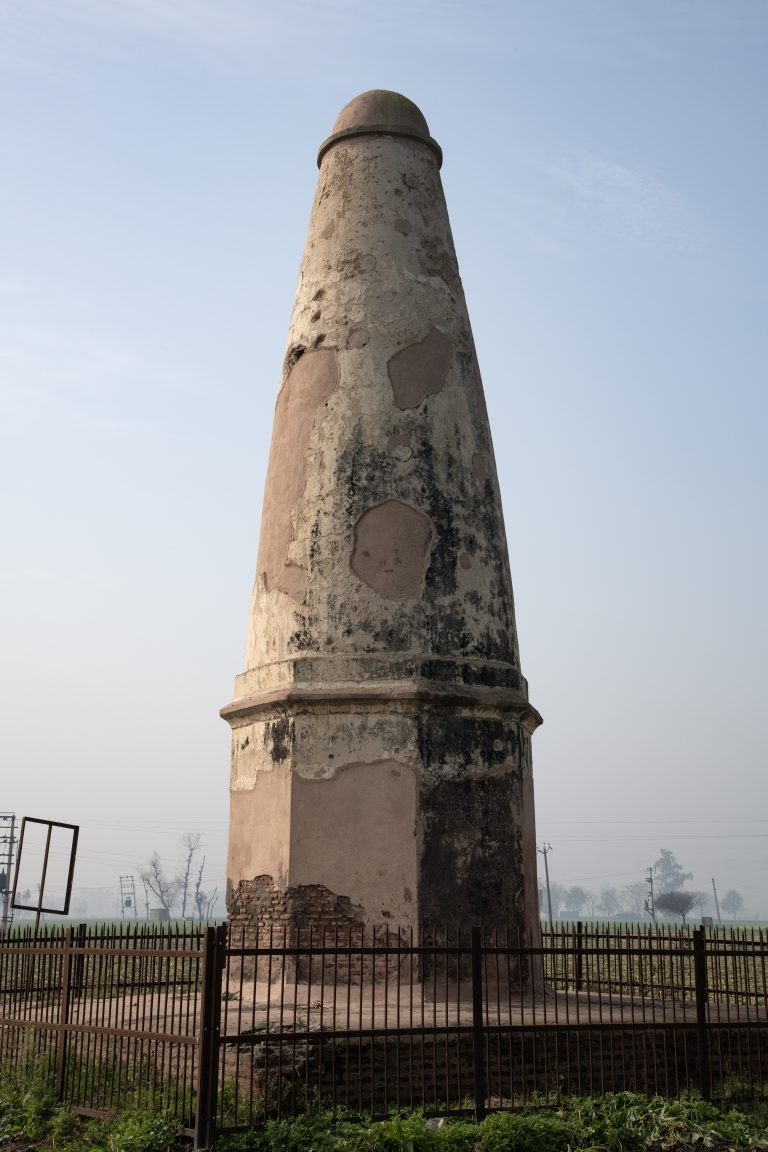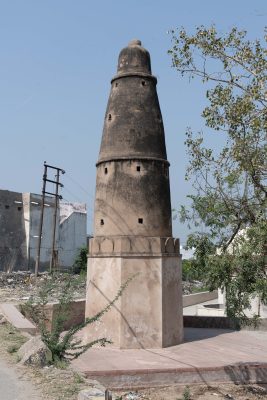Mughal Architecture along the GT Road
Kos Minars
Visitors to India almost inevitably find their way to the stretch of the GT road between Delhi, the nation’s capital, and Agra’s world-famous tourist sites. As travelers from the ancient to the present have found their way down this same road and to their nightly stops, their path would be set every 2.1-2.4 kilometers or around every kos(3.22 kilometers/1.1 miles) by distance markers called Kos Minars. Simple kos minars constructed from mud and wood are known to have existed along the route as far back as the 3rd century B.C.E.. First recorded in the reforms of Ashoka, the revitalization of the royal road under the Mughals and Sher Shah Suri would upgrade Kos Minars into architecturally sound, plastered brick and stone conical structures. The construction of these markers was of particular interest to the first Mughal ruler, Barbur, who ordered the placement of 11-meter/36-foot high kos minars every nine kos from Agra to Kabul. Sher Shah Suri and the Mughal Emperors Akbar and Jahangir would similarly upgrade the royal road’s guidance system by constructing additional minars along the royal highway and throughout their empire.



Designed to protrude from the surrounding enviroment and be easily noticeable from a distance, Mughal kos minars vary regionally in size, use, and complexity. Generally, these distance markers are smooth and cylindrical, with a rounded top that flares out to an octagonal base. The surface of the kos minar was generally plastered and painted, but these could also differ in ornamentation. Kos minars like the one at Chhata, near Mathura in Haryana, contain ring molding and small square enclaves on the pillar portion of the minar. In contrast, the minar found at Sikandra features a unique crowning ornamentation, a red sandstone amalka on its terminus, signifying a royal significance. Aside from faded painting, other aspects of the Mughal’s kos minars have similarly faded into the records of history, like the placement of hundreds of deer antlers on mile markers built by Akbar to commemorate his hunts.
Bibliography
Sharma, Dharam Vir, and Manoj Kumar. 2013. Kos Minar in History and Architecture.
Singh, Raghubir. 1995. The Grand Trunk Road: A Passage Through India. http://ci.nii.ac.jp/ncid/BB1012507X.
Sinha, Vandana. 2019. “Documentation of Indo-Islamic Architecture Built Along a 16th-century Highway.” Art Libraries Journal 44 (3): 98–107. https://doi.org/10.1017/alj.2019.14.